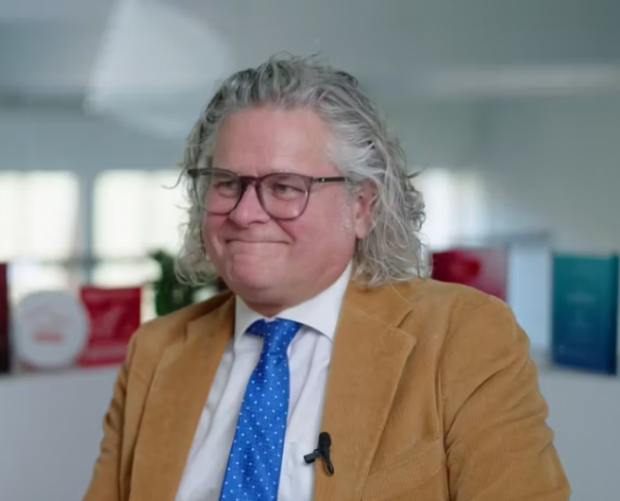Making sense of a multichannel, social world
- Wednesday, May 15th, 2019
- Share this article:
Mobile Marketing talks to SAP Digital Interconnect director, head of product management, Meenal Prasad, and VP, head of sales EMEA and APJ, Mirko Benetti about the changing nature of customer engagement.

The days when companies could choose how and where to engage with their customers and prospects are a thing of the past. While ‘broadcast’ marketing channels like TV and print still have their place in the sales funnel, consumers are increasingly calling the shots, choosing the channels through which they wish to engage and when with the brands of their choice. If the brands are not in those channels, they risk missing out.
This channel fragmentation forms part of a bigger picture, in which customer experience has come to trump product and price as the key brand differentiator.
“The customer journey starts from the first point of contact and is completely digitized in many ways through multiple channels,” says Mirko Benetti, VP, head of sales EMEA and APJ at SAP Digital Interconnect. “Added to this, every consumer has their preferred channels of communication, so brands need a single customer view that cuts across all channels, in order to present a consistent message. This is a challenge many businesses are struggling to meet.”
Even if they don’t yet realise it. For as Meenal Prasad, director, head of product management at SAP Digital Interconnect points out, in a Bain study, 80 per cent of brand CMOs said they felt they were delivering a superior customer experience, but only 8 per cent of consumers agreed.
“When brands started on the digitization journey, it was more around operational data, how many visitors, which pages are they looking at, how much time do they spend on those pages, but it needs to move beyond that now towards delivering a better customer experience,” she says. “And the multichannel approach is key. For example, 49 per cent of consumers would prefer to get support via messaging than via a phone call. Brands have to take note of these trends if they are to succeed in the modern, multichannel era, in which the consumer is in control.”
Social channels
The issue is compounded by the rise and popularity of social media networks. As Prasad points out, social channels started out as platforms for informal personal communications, but are now increasingly being used as a way for consumers to engage with businesses. At Facebook’s May 2018 developer event, the company revealed that the number of messages exchanged between Facebook Messenger users and businesses had quadrupled to 8bn per month, from 2bn per month the previous year. The challenge this presents for businesses is not insubstantial.
“The question enterprises ask themselves is: ‘Do we need to integrate with all the main social channels?’” she says. “They all have different standards and technical specifications, so it requires a huge integration effort. Alternatively, enterprises can hook into an existing cloud communications platform like SAP Digital Interconnect through a single API, through which the business can then connect to multiple channels and platforms and offer their customers a choice of how they want to receive notifications, alerts, promotional messages and support.”
The SAP Digital Interconnect solution covers the key social channels – Facebook Messenger, WeChat, Viber, WhatsApp, and Telegram, with more to follow – and is powered by an intelligent decision engine, where the failover or business rules can be set by the enterprise, depending on the type of communication or user preferences in terms of which channel to receive communications on. This means that if it’s not possible to communicate with the consumer via their preferred channel, the system can move on to the next.
“If the message cannot be delivered or if the recipient does not read or respond to the message within the defined threshold, it will move to the next preferred channel, and then to the next, and ultimately to SMS,” says Prasad. SMS is the ultimate failover channel, available across the globe in all 220 countries and territories we cover.”
As Benetti notes, if enterprises can harness the power of social, then the challenge becomes an opportunity. He says: “Social is transitioning to a useful and effective business engagement tool. People are used to interacting and exchanging information and taking action through social channels, so there is an opportunity for brands to interact with consumers in a way that is immediate and effective and very well received and perceived.
Two-way engagement
“Tapping into a multichannel cloud platform delivers two-way engagement for companies with their customers over multiple channels. It enables them to switch from one channel to another in line with the consumer’s preferences, and simplifies the management of the process.”
In this respect, it seems, enterprises are currently playing catch-up. Last year, SAP Digital Interconnect carried out a study in partnership with Ovum, in which it quizzed developers about their use and integration of communications APIs in their organisations’ apps and back-end systems. While SMS remains a popular and effective engagement channel, consumers are moving resoundingly towards messaging apps – the study found that 32 per cent of developers said they intended to add or integrate messaging apps into back-end systems, with 71 per cent saying that they were looking to replace web chat with a social app or apps.
But some enterprises in some verticals, are further down the road, and are using SAP Digital Interconnect’s multichannel cloud platform for a variety of applications.
Two-factor authentication
In the banking, healthcare, and other worlds where trust and privacy are paramount, social channels can be used for user account security, as part of the two-factor authentication (2FA) process, where a user needs two pieces of evidence – typically a permanent password and a temporary, one-time PIN sent to their phone to prove they are who they claim to be. “Social is a perfect way to do this,” says Benetti. “It’s real-time, two-way, and people feel safe and secure because the communication channel is encrypted end-to-end. Just as important, because they are two-way, the user can instigate the conversation to ask about the most recent transactions on their account for example, or whatever they need to know.”
Similarly, in the travel and hospitality industries, airlines and hotels are using social channels to send alerts and notifications to their customers when flights are delayed or the gate is called. “Imagine when you check out of a hotel and when you get in your cab to the airport, there’s a message from the hotel asking you to rate your stay,” says Prasad. “That’s so much more natural, so much more conversational, than receiving an email a week later with a long form to complete.”
And social is becoming increasingly important in the retail sector. “It’s a very aggressive industry, where everyone is competing for the consumer’s wallet,” says Benetti. “Customer experience is key, so offering customers a way to get in touch with you to say you sent the wrong size or the wrong colour via their preferred channel, and without keeping them having on the phone, makes a real difference. And not only does it provide a better experience for the customer, it’s better for the business too, much more efficient than routing enquiries through a call centre.”
As consumers increasingly live their lives on social, the message for enterprises is clear: social channels are not just for sharing fun moments with friends. For many people, they are a natural part of how they expect to engage and do business with their favourite brands. If they can’t easily find and engage with you on those channels, don’t be surprised if they switch allegiance to a brand they can.
















